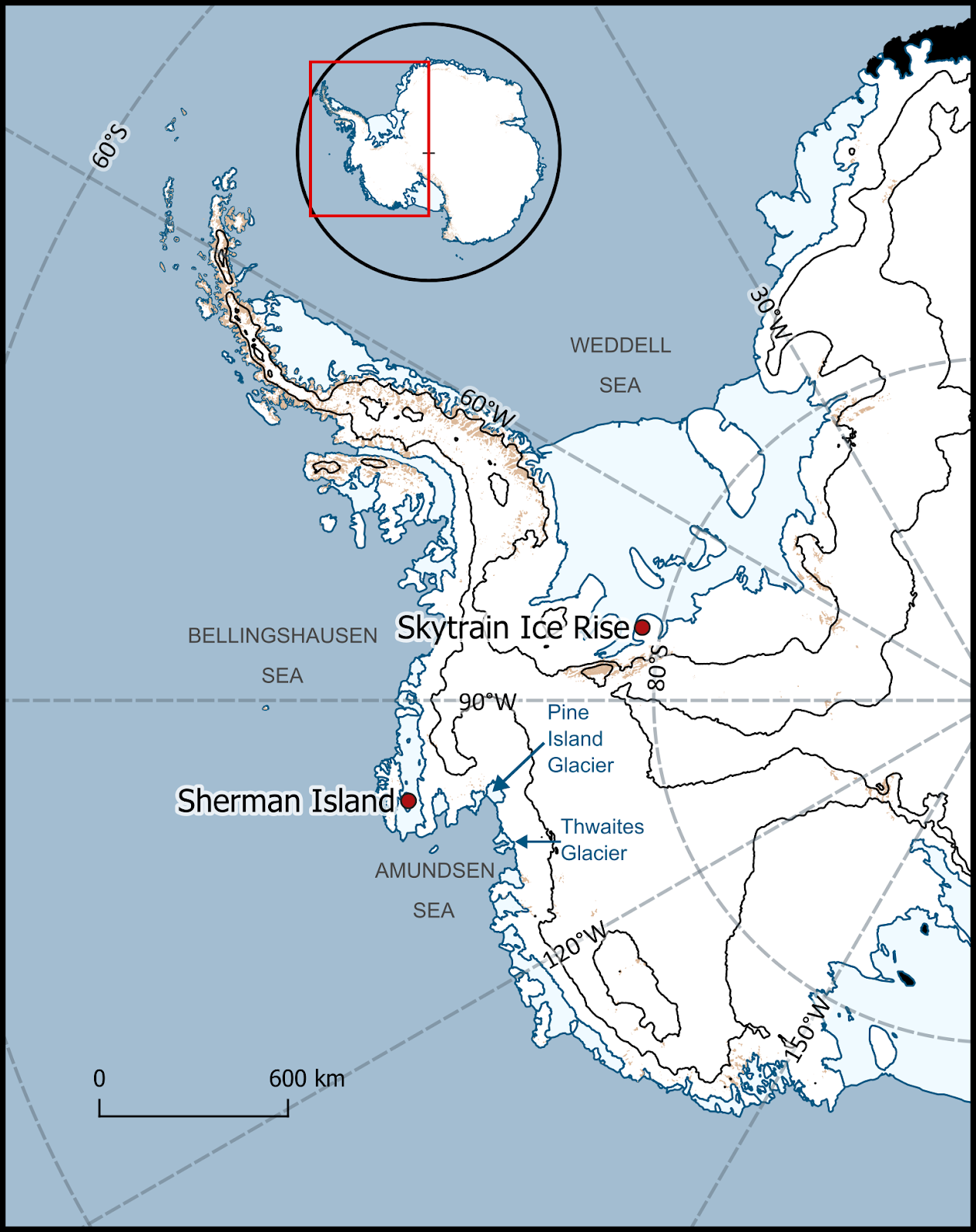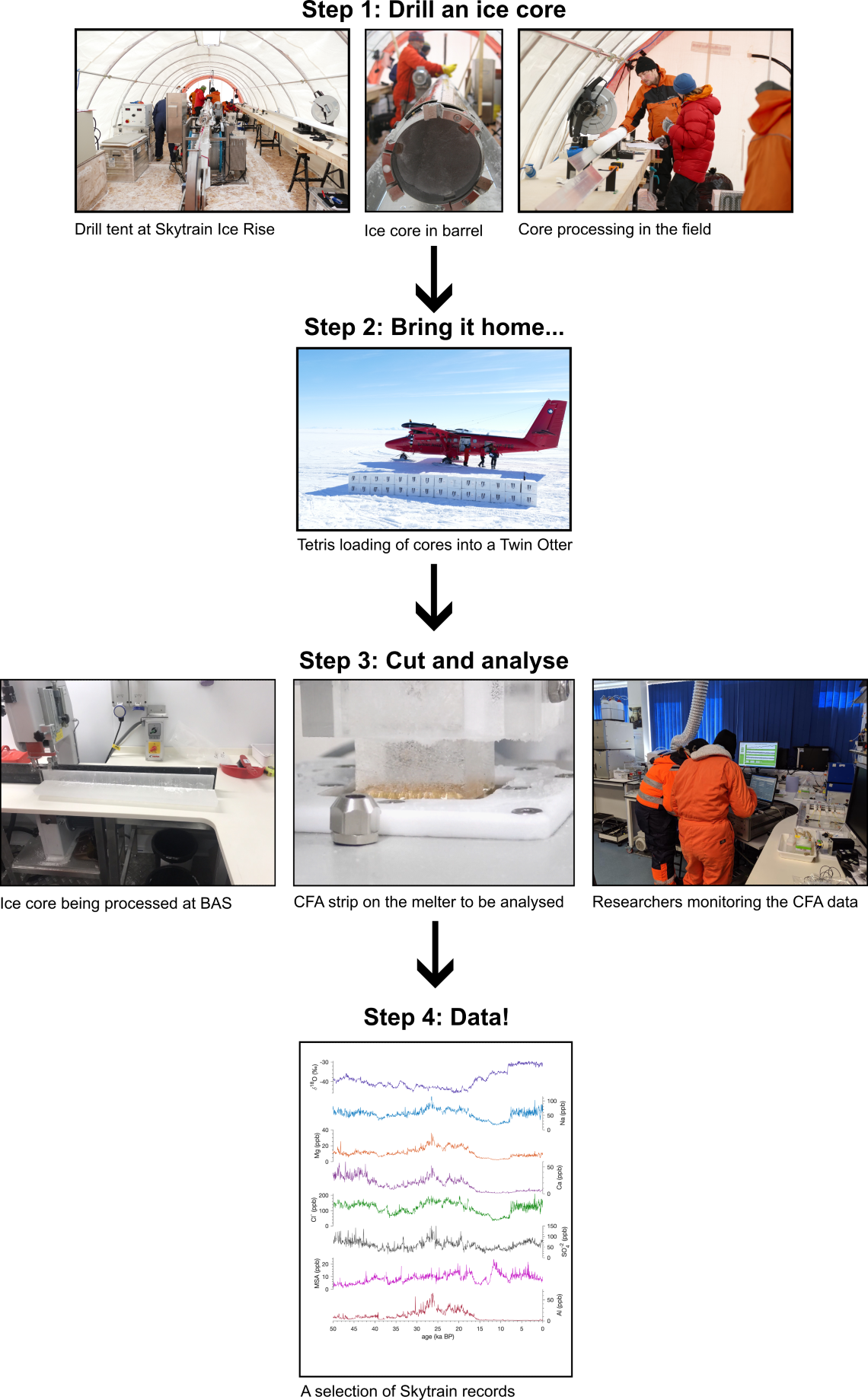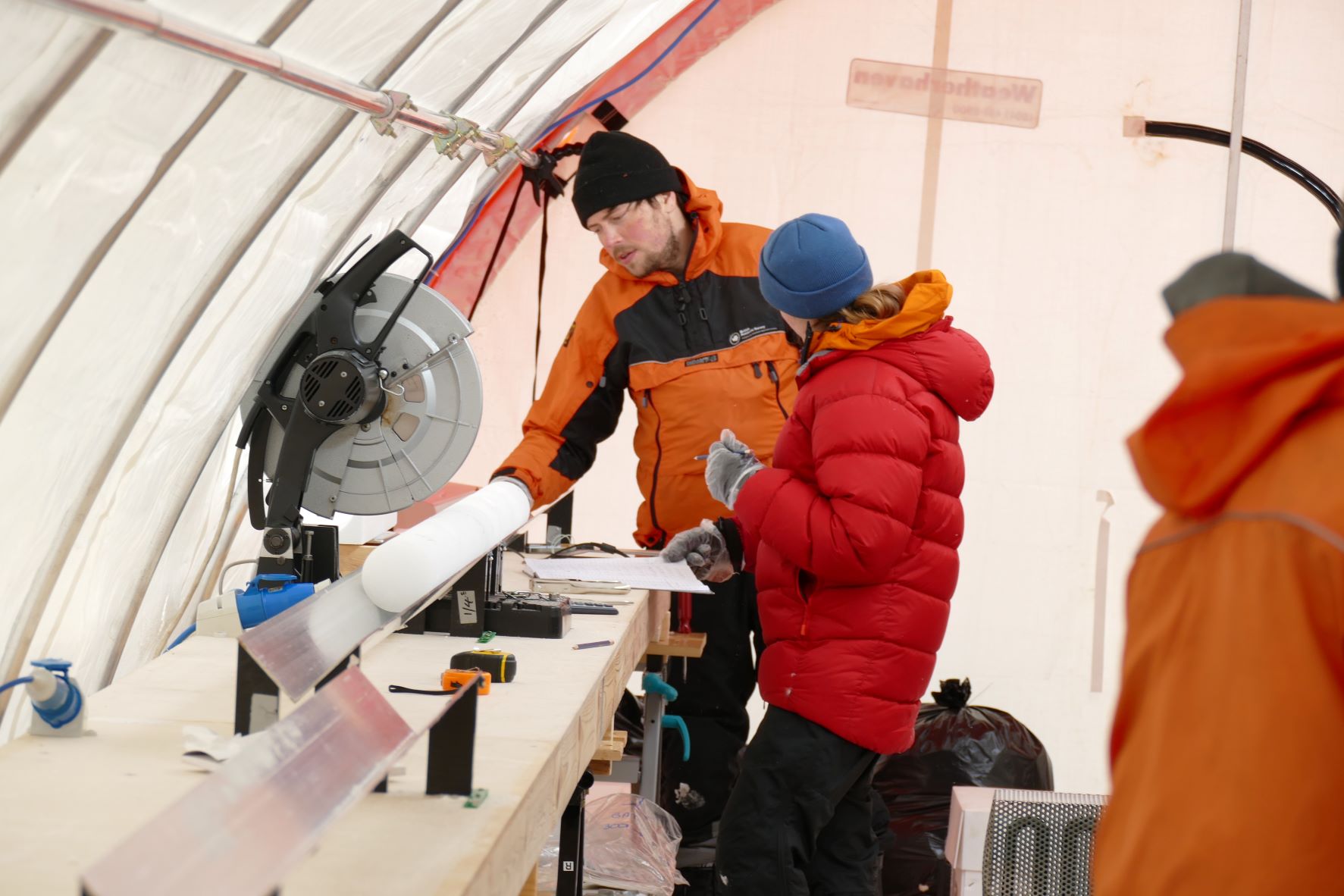This joint project between the Department of Earth Sciences and British Antarctic Survey (BAS) aims to constrain estimates of if, how and when the West Antarctic Ice Sheet (WAIS) retreated during the Last Interglacial (LIG), 130 to 115 thousand years ago.
Evidence suggests that sea level during the LIG peaked at between 6 and 9 metres higher than present, a range which necessitates at least some contribution from Antarctic Ice Sheet retreat, the WAIS being the most likely candidate. Antarctic temperatures during this time period were in line with projections for the year 2100. These figures warn of the potential for significant future sea level rise resulting from anthropogenic climate change.
Retreat of WAIS glaciers, such as Pine Island and Thwaites, is underway and identified as a “tipping point” which could bring about irreversible WAIS collapse. But “between 6 and 9 metres” is quite a substantial range, and figuring out what happened during the LIG would allow us to fine-tune this important estimate. The WACSWAIN project aims to achieve this by drilling ice cores at WAIS locations expected to have survived the LIG. The chemical records of these cores might tell us what happened during that time.

Two fieldwork campaigns were carried out, firstly at Skytrain Ice Rise in 2018/19 when a 651 m ice core was successfully drilled in a single season. The following year, a drilling campaign on Sherman Island obtained ice samples to 323 m depth, which you can read about in in this series of blog posts.
Over the last four years, the WACSWAIN team has been busy processing, analysing, and interpreting the Skytrain core. “Processing” involves the core being cut into longitudinal strips. These strips are analysed from the top of the ice sheet to the bottom, using the complicated Continuous Flow Analysis (CFA) system, with help from our colleagues at BAS. This system continuously melts strips of ice and feeds the meltwater and gases into instruments used for measuring a range of chemical, gaseous and isotopic species. We supplemented the data with additional “discrete” measurements, in a collaboration with ice core labs from around the globe. This generated an enormous amount of data! Lab analysis of the core was broadly completed in late 2020, and the last two years have been spent pouring over the various datasets, to begin interpreting what we’ve got!

The first stage of any ice core interpretation is establishing an “age scale” for the core – essentially assigning an age to each depth point throughout the core. The age increases exponentially with depth due to the progressive thinning of annual ice layers due to compaction and lateral flow. However, the annual layer thickness also varies with snow accumulation rate over time, so dating is not always a straightforward process. We dated the core through multiple methods. The most recent ~2 ka was dated using annual layer counting – literally counting the regular, yearly variations in certain chemical species. We then identified absolute age markers including well known abrupt changes in methane concentration, the Laschamps Event at 42 ka and long term changes in ice chemistry relating to continental scale dust transport and deposition changes, among others. Together, these methods allowed us to develop a coherent age scale for the majority of the core. We can conclude that the Skytrain core does contain the Last Interglacial – this was an exciting result!
We are now interpreting the well-dated records of stable water isotopes, chemical species and other measurements including total air content. Comparing these datasets together, it should be possible for us to interpret, at least qualitatively, historical changes in temperature and elevation at the site. This could allow us to piece together what happened to the WAIS and Ronne Ice Shelf surrounding Skytrain Ice Rise. Using this approach, we are already reaching some conclusions about an intriguing change in conditions during the early Holocene.
The Skytrain Ice Rise core is the longest from the WAIS and has the potential to dramatically aid our understanding of at least the last 130 ka of this important region of Antarctica. We hope to publish more exciting data and results in the coming months, so be sure to watch this space!


